-
 Bitcoin
Bitcoin $83,733.4061
-1.29% -
 Ethereum
Ethereum $1,594.3479
-1.74% -
 Tether USDt
Tether USDt $1.0000
0.01% -
 XRP
XRP $2.0826
-1.94% -
 BNB
BNB $581.9915
-0.41% -
 Solana
Solana $126.1154
-2.12% -
 USDC
USDC $0.9999
-0.01% -
 TRON
TRON $0.2513
0.07% -
 Dogecoin
Dogecoin $0.1553
-2.14% -
 Cardano
Cardano $0.6128
-3.26% -
 UNUS SED LEO
UNUS SED LEO $9.3174
-1.22% -
 Chainlink
Chainlink $12.3521
-1.81% -
 Avalanche
Avalanche $18.8671
-5.22% -
 Stellar
Stellar $0.2363
-1.27% -
 Toncoin
Toncoin $2.9018
0.31% -
 Shiba Inu
Shiba Inu $0.0...01172
-0.86% -
 Sui
Sui $2.0951
-3.63% -
 Hedera
Hedera $0.1580
-4.98% -
 Bitcoin Cash
Bitcoin Cash $319.4231
-0.81% -
 Litecoin
Litecoin $76.0657
-1.99% -
 Polkadot
Polkadot $3.5459
-2.73% -
 Dai
Dai $1.0000
0.01% -
 Bitget Token
Bitget Token $4.2560
-1.12% -
 Hyperliquid
Hyperliquid $15.2255
-5.33% -
 Ethena USDe
Ethena USDe $0.9992
0.01% -
 Pi
Pi $0.6236
-15.50% -
 Monero
Monero $216.8844
2.23% -
 Uniswap
Uniswap $5.2307
-1.66% -
 OKB
OKB $52.1135
1.06% -
 Pepe
Pepe $0.0...07120
-2.00%
How are orphan blocks generated?
Orphan blocks in blockchain occur when two miners solve a problem simultaneously, but only one block is accepted by the network, impacting miners' rewards.
Apr 11, 2025 at 01:01 pm
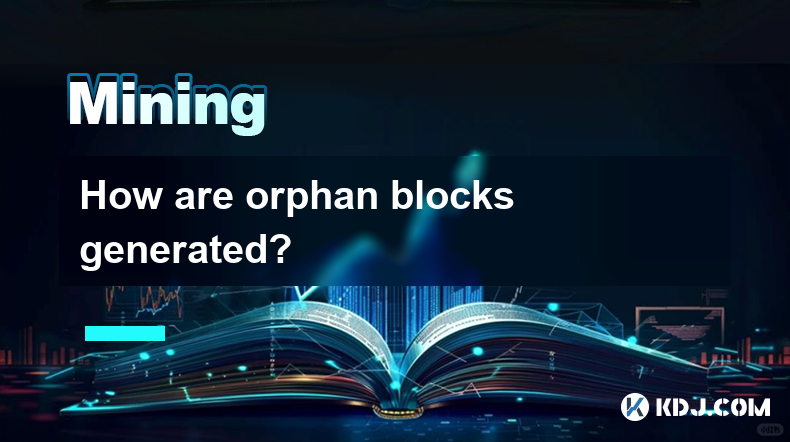
Introduction to Orphan Blocks
In the world of cryptocurrencies, particularly in blockchain networks like Bitcoin, orphan blocks play a significant role in the mining process. An orphan block is a valid block that is not part of the main blockchain. Understanding how these blocks are generated is crucial for anyone involved in cryptocurrency mining or interested in the technical aspects of blockchain technology.
The Mining Process and Block Generation
The generation of blocks in a blockchain network is a fundamental aspect of how cryptocurrencies function. Miners compete to solve complex mathematical problems, and the first to solve it gets to add a new block to the blockchain. This process is known as proof-of-work. When a miner successfully adds a block, they are rewarded with cryptocurrency, typically Bitcoin in the case of the Bitcoin network.
The Role of Network Latency in Orphan Block Generation
One of the primary reasons for the generation of orphan blocks is network latency. When two miners solve the mathematical problem almost simultaneously, they may both broadcast their blocks to the network at the same time. Due to the time it takes for information to travel across the network, some nodes might receive one block before the other. As a result, different parts of the network might temporarily accept different blocks as the next valid block in the chain.
- Example Scenario: Miner A and Miner B solve the problem at the same time. Miner A's block reaches Node 1 first, while Miner B's block reaches Node 2 first. Node 1 adds Miner A's block to its version of the blockchain, and Node 2 adds Miner B's block to its version. Eventually, the network must decide which block to accept as part of the main chain.
The Consensus Mechanism and Orphan Blocks
The blockchain network uses a consensus mechanism to resolve conflicts and determine which block should be part of the main chain. In most cases, the block that is accepted by the majority of the network's nodes becomes the valid block, and the other block becomes an orphan. This decision is based on the principle that the longest chain (or the chain with the most cumulative proof-of-work) is considered the valid one.
- Example of Consensus: If Miner A's block is accepted by 60% of the nodes and Miner B's block by 40%, Miner A's block will be added to the main chain, and Miner B's block will become an orphan.
The Impact of Block Propagation Speed
The speed at which blocks propagate through the network also plays a crucial role in the generation of orphan blocks. If a block takes too long to propagate, other miners might find a new block and add it to the chain before the previous block is fully accepted by the network. This situation can lead to the creation of orphan blocks.
- Factors Affecting Propagation Speed: The size of the block, the network's overall congestion, and the efficiency of the nodes' connections can all impact how quickly a block spreads across the network.
The Role of Mining Pools in Orphan Block Generation
Mining pools, where miners combine their computational resources to increase their chances of solving the mathematical problem, can also contribute to the generation of orphan blocks. When a mining pool finds a block, it must be broadcast to the entire network. If the pool's block propagation is slower than that of an individual miner or another pool, it might result in the pool's block becoming an orphan.
- Mining Pool Strategy: Some mining pools implement strategies to reduce the likelihood of their blocks becoming orphans, such as using specialized software to optimize block propagation.
Technical Measures to Reduce Orphan Blocks
To mitigate the issue of orphan blocks, various technical measures have been developed. One such measure is the use of compact block relay, which allows nodes to reconstruct blocks more quickly by only transmitting the differences between blocks rather than the entire block. This can significantly reduce the time it takes for a block to propagate across the network.
- Implementation Steps for Compact Block Relay:
- Step 1: A node receives a block header from another node.
- Step 2: The node checks if it already has the transactions listed in the block header.
- Step 3: If it does, the node requests only the missing transactions.
- Step 4: The node reconstructs the full block using the received data and adds it to its version of the blockchain.
The Economic Impact of Orphan Blocks
Orphan blocks have a direct economic impact on miners. When a miner's block becomes an orphan, they do not receive the block reward or transaction fees associated with that block. This can be a significant loss, especially for miners operating on thin margins. As a result, miners are highly motivated to implement strategies and technologies that reduce the likelihood of their blocks becoming orphans.
- Economic Considerations: Miners must balance the cost of implementing advanced technologies to reduce orphan blocks against the potential loss of revenue from orphaned blocks.
Frequently Asked Questions
Q1: Can orphan blocks ever be re-added to the main blockchain?
No, once a block becomes an orphan, it cannot be re-added to the main blockchain. The network's consensus mechanism ensures that only one block is accepted as part of the main chain, and any competing blocks are permanently excluded.
Q2: How do orphan blocks affect the security of the blockchain?
Orphan blocks do not directly affect the security of the blockchain. However, they can indirectly impact security by influencing miners' behavior. If miners frequently experience orphaned blocks, they might be more inclined to join larger mining pools, potentially leading to centralization, which can be a security concern.
Q3: Are orphan blocks more common in certain cryptocurrencies?
Yes, the frequency of orphan blocks can vary between different cryptocurrencies. Factors such as block size, block time, and the efficiency of the network's infrastructure can influence how often orphan blocks occur. For example, cryptocurrencies with smaller block sizes and faster block times might experience fewer orphan blocks compared to those with larger blocks and slower block times.
Q4: Can miners predict when their blocks might become orphans?
Miners cannot predict with certainty whether their blocks will become orphans, as it depends on various factors such as network latency and the actions of other miners. However, they can take steps to minimize the risk, such as optimizing their block propagation strategies and joining mining pools with efficient block relay systems.
Disclaimer:info@kdj.com
The information provided is not trading advice. kdj.com does not assume any responsibility for any investments made based on the information provided in this article. Cryptocurrencies are highly volatile and it is highly recommended that you invest with caution after thorough research!
If you believe that the content used on this website infringes your copyright, please contact us immediately (info@kdj.com) and we will delete it promptly.
- Synthetic Stablecoin Issuer Ethena Labs Shuts Down Operations in Germany
- 2025-04-16 10:15:20
- Make no mistake – Pulsz slots are top-notch
- 2025-04-16 10:15:20
- Pre-draft, Paige Bueckers Dazzled in a Brown Crystal-embellished Power Suit
- 2025-04-16 10:10:13
- As Q2 begins, crypto markets are showing signs of renewed optimism — and with it, fresh opportunities for strategic investment.
- 2025-04-16 10:10:13
- Top 3 Cryptocurrencies to Buy Right Now (April 15th)
- 2025-04-16 10:05:12
- Ethereum (ETH) Shows Early Signs of Recovery as Whales Accumulate
- 2025-04-16 10:05:12
Related knowledge
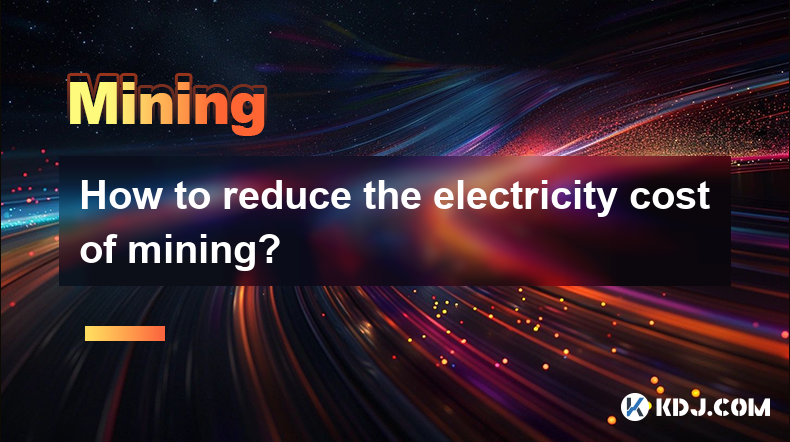
How to reduce the electricity cost of mining?
Apr 16,2025 at 08:42am
Mining cryptocurrencies, particularly Bitcoin, is an energy-intensive process that can lead to significant electricity costs. However, there are several strategies that miners can employ to reduce these expenses and make their operations more cost-effective. In this article, we will explore various methods to minimize the electricity cost of mining. Cho...
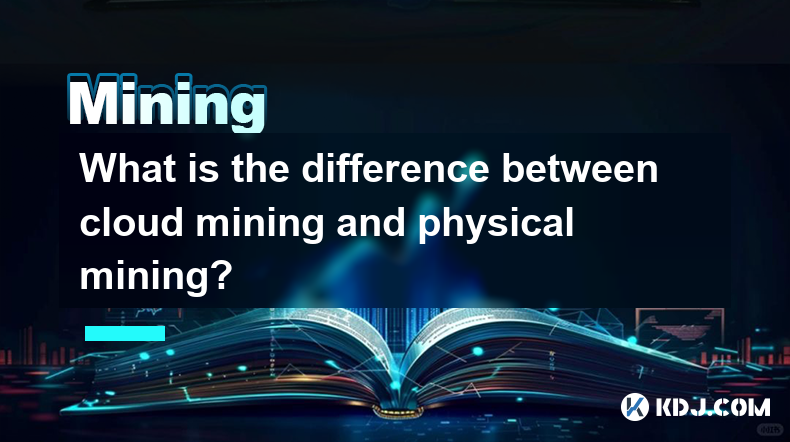
What is the difference between cloud mining and physical mining?
Apr 16,2025 at 01:49am
What is the difference between cloud mining and physical mining? In the world of cryptocurrencies, mining is the process by which new coins are generated and transactions are verified and added to the blockchain. There are two primary methods of mining: cloud mining and physical mining. Understanding the differences between these two approaches can help...
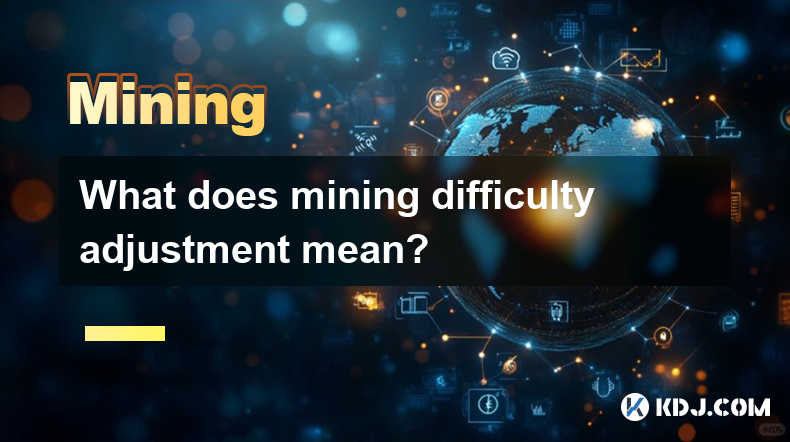
What does mining difficulty adjustment mean?
Apr 16,2025 at 12:42am
What does mining difficulty adjustment mean? Mining difficulty adjustment is a crucial mechanism in blockchain networks, particularly in Proof of Work (PoW) systems like Bitcoin. It ensures that the rate at which new blocks are added to the blockchain remains consistent, despite fluctuations in the total computational power (hash rate) of the network. T...
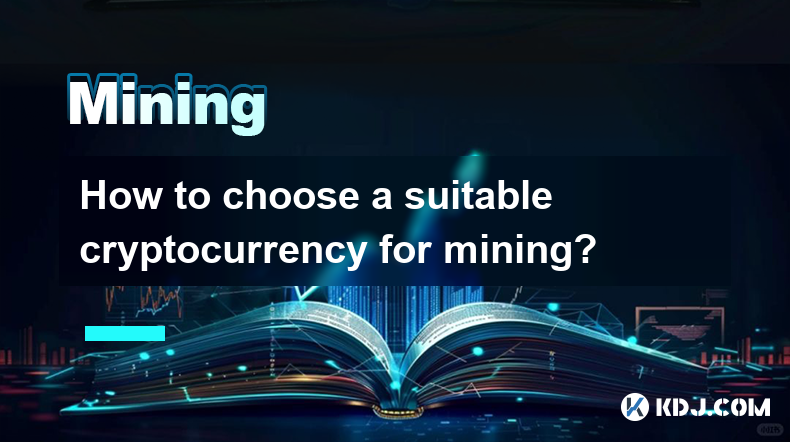
How to choose a suitable cryptocurrency for mining?
Apr 16,2025 at 10:15am
Choosing a suitable cryptocurrency for mining involves several considerations that can impact your profitability and efficiency. Mining cryptocurrencies can be a rewarding venture, but it requires careful planning and research. In this article, we will explore the key factors to consider when selecting a cryptocurrency for mining, ensuring you make an i...
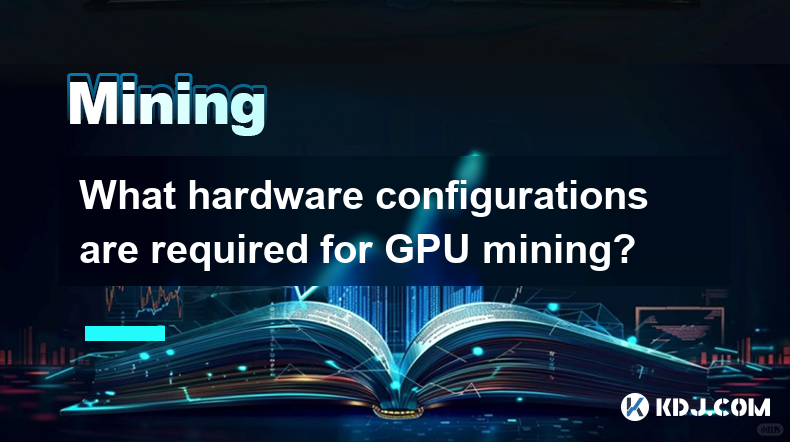
What hardware configurations are required for GPU mining?
Apr 16,2025 at 09:21am
GPU mining has become a popular method for cryptocurrency enthusiasts to mine various cryptocurrencies, such as Ethereum, Ravencoin, and others. To successfully engage in GPU mining, it is essential to understand the hardware configurations required to maximize efficiency and profitability. This article will delve into the specifics of what you need to ...
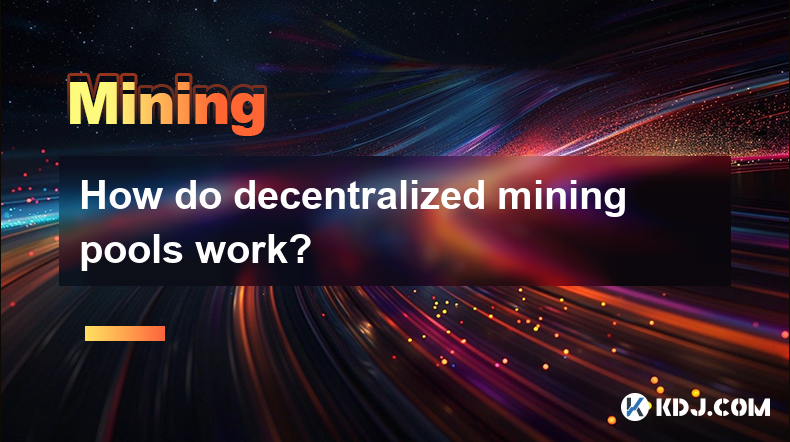
How do decentralized mining pools work?
Apr 16,2025 at 05:42am
Decentralized mining pools represent a significant evolution in the world of cryptocurrency mining, offering a more democratic and transparent approach compared to traditional centralized pools. In this article, we will explore the mechanics of decentralized mining pools, their benefits, and how they operate within the cryptocurrency ecosystem. What are...

How to reduce the electricity cost of mining?
Apr 16,2025 at 08:42am
Mining cryptocurrencies, particularly Bitcoin, is an energy-intensive process that can lead to significant electricity costs. However, there are several strategies that miners can employ to reduce these expenses and make their operations more cost-effective. In this article, we will explore various methods to minimize the electricity cost of mining. Cho...

What is the difference between cloud mining and physical mining?
Apr 16,2025 at 01:49am
What is the difference between cloud mining and physical mining? In the world of cryptocurrencies, mining is the process by which new coins are generated and transactions are verified and added to the blockchain. There are two primary methods of mining: cloud mining and physical mining. Understanding the differences between these two approaches can help...

What does mining difficulty adjustment mean?
Apr 16,2025 at 12:42am
What does mining difficulty adjustment mean? Mining difficulty adjustment is a crucial mechanism in blockchain networks, particularly in Proof of Work (PoW) systems like Bitcoin. It ensures that the rate at which new blocks are added to the blockchain remains consistent, despite fluctuations in the total computational power (hash rate) of the network. T...

How to choose a suitable cryptocurrency for mining?
Apr 16,2025 at 10:15am
Choosing a suitable cryptocurrency for mining involves several considerations that can impact your profitability and efficiency. Mining cryptocurrencies can be a rewarding venture, but it requires careful planning and research. In this article, we will explore the key factors to consider when selecting a cryptocurrency for mining, ensuring you make an i...

What hardware configurations are required for GPU mining?
Apr 16,2025 at 09:21am
GPU mining has become a popular method for cryptocurrency enthusiasts to mine various cryptocurrencies, such as Ethereum, Ravencoin, and others. To successfully engage in GPU mining, it is essential to understand the hardware configurations required to maximize efficiency and profitability. This article will delve into the specifics of what you need to ...

How do decentralized mining pools work?
Apr 16,2025 at 05:42am
Decentralized mining pools represent a significant evolution in the world of cryptocurrency mining, offering a more democratic and transparent approach compared to traditional centralized pools. In this article, we will explore the mechanics of decentralized mining pools, their benefits, and how they operate within the cryptocurrency ecosystem. What are...
See all articles























































































